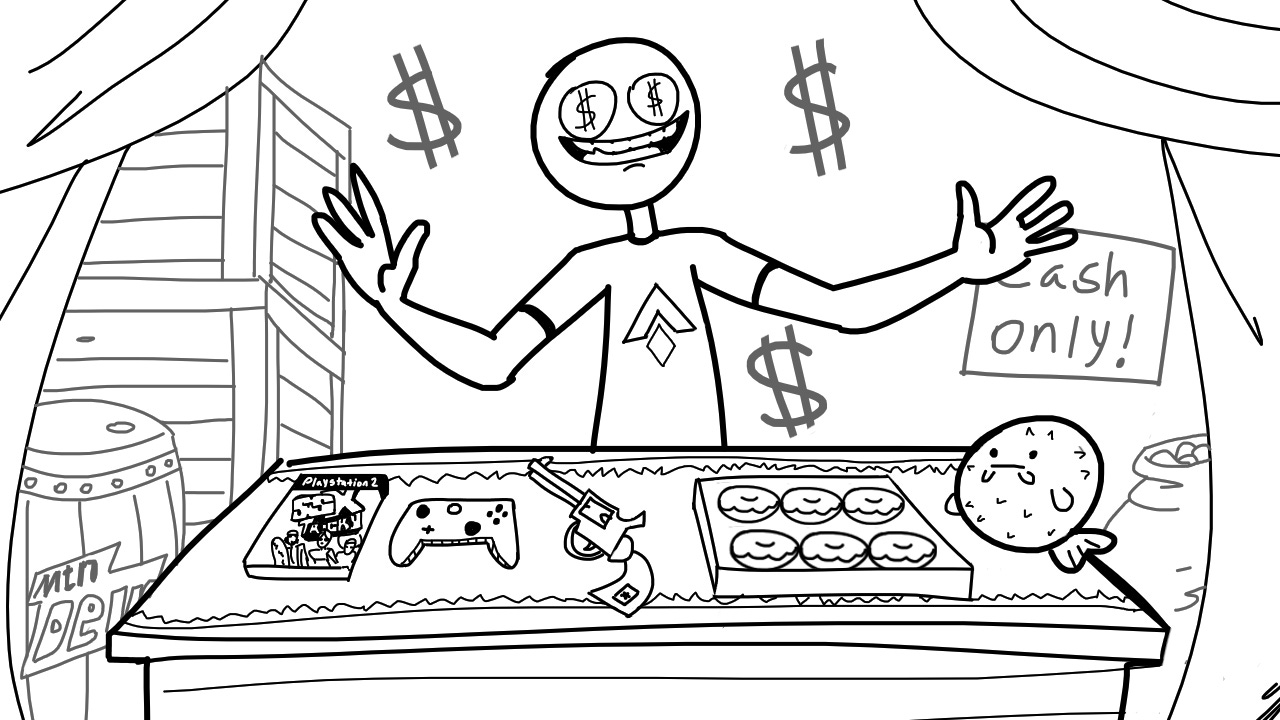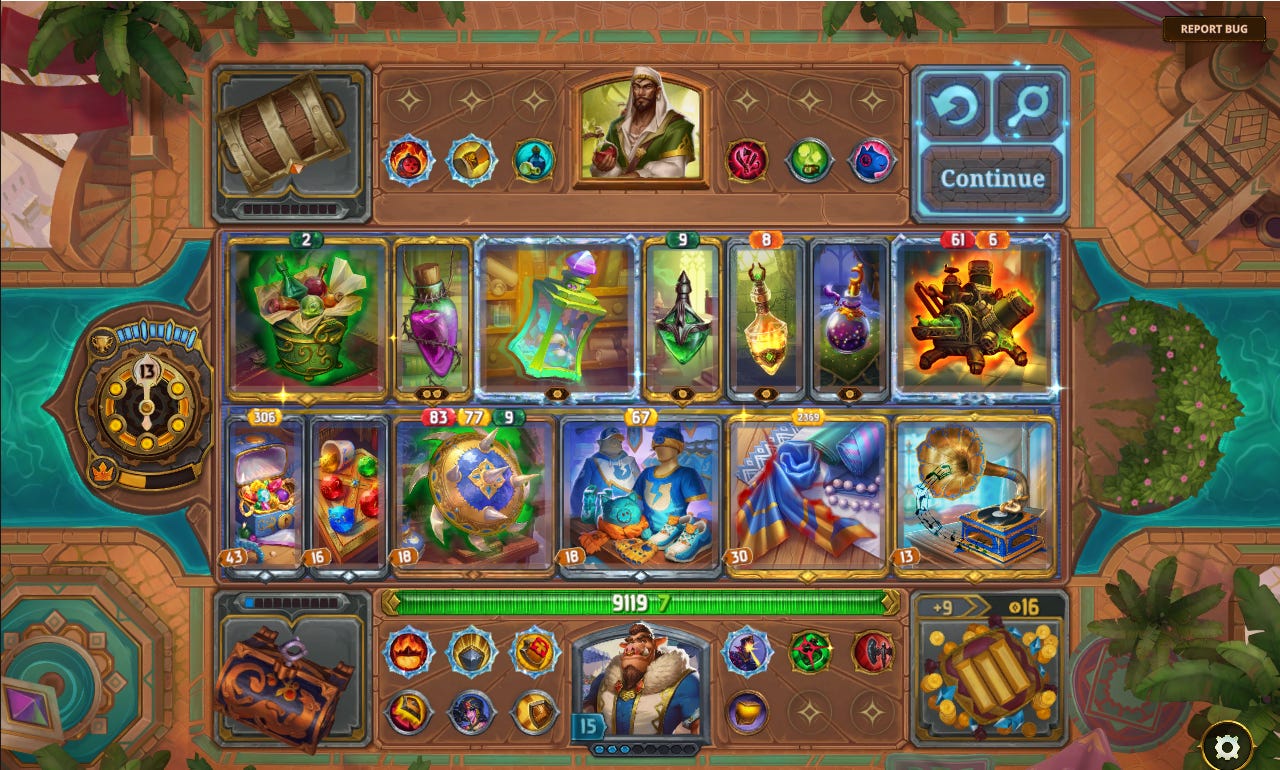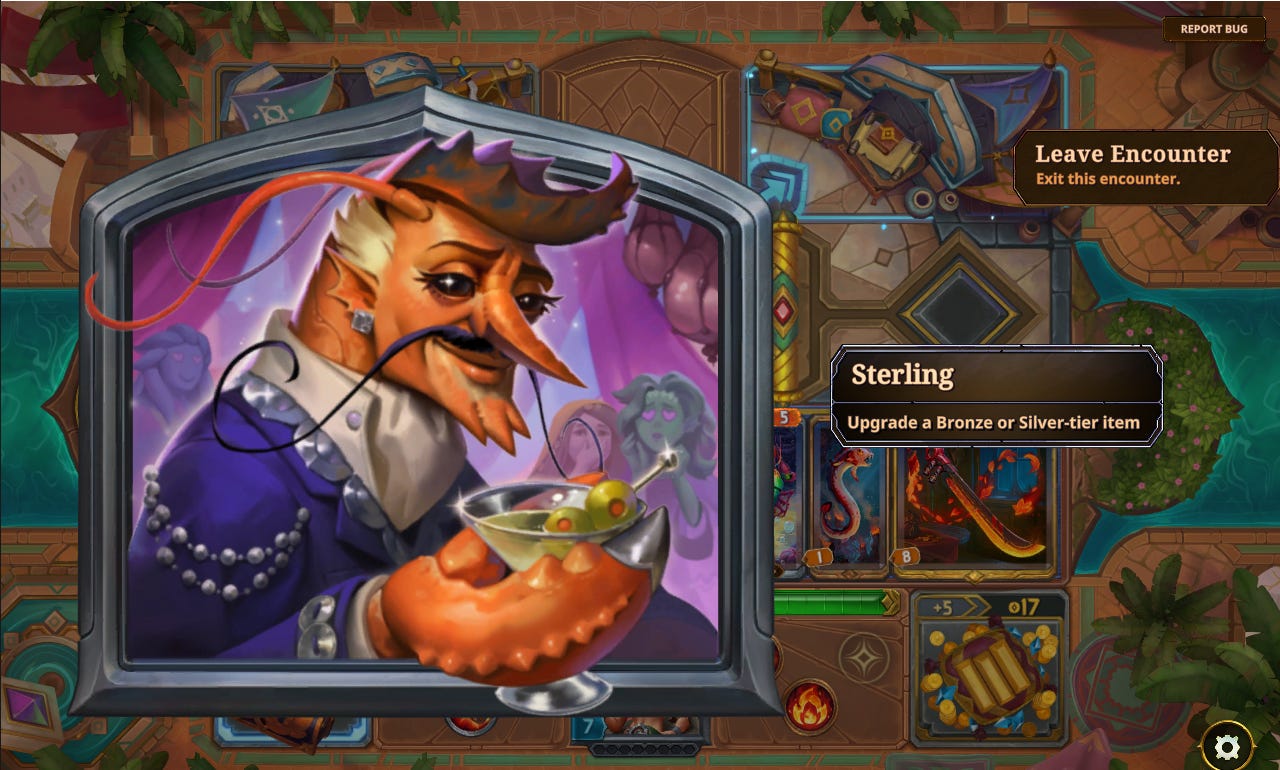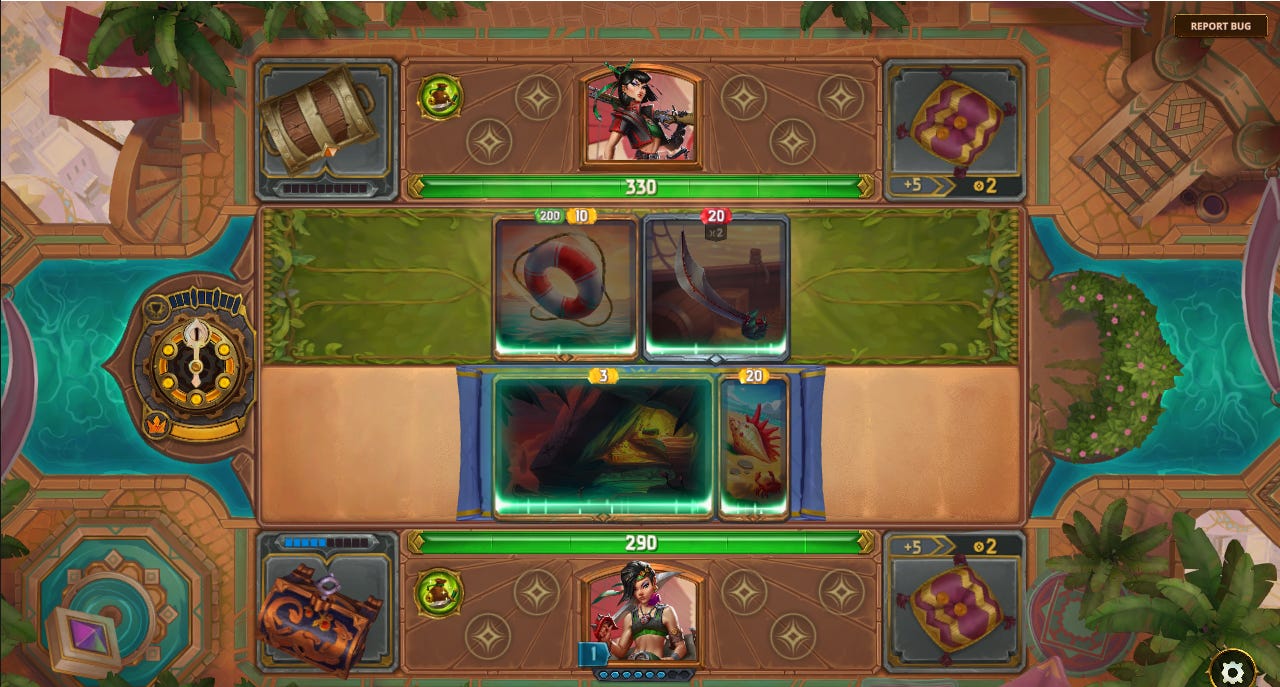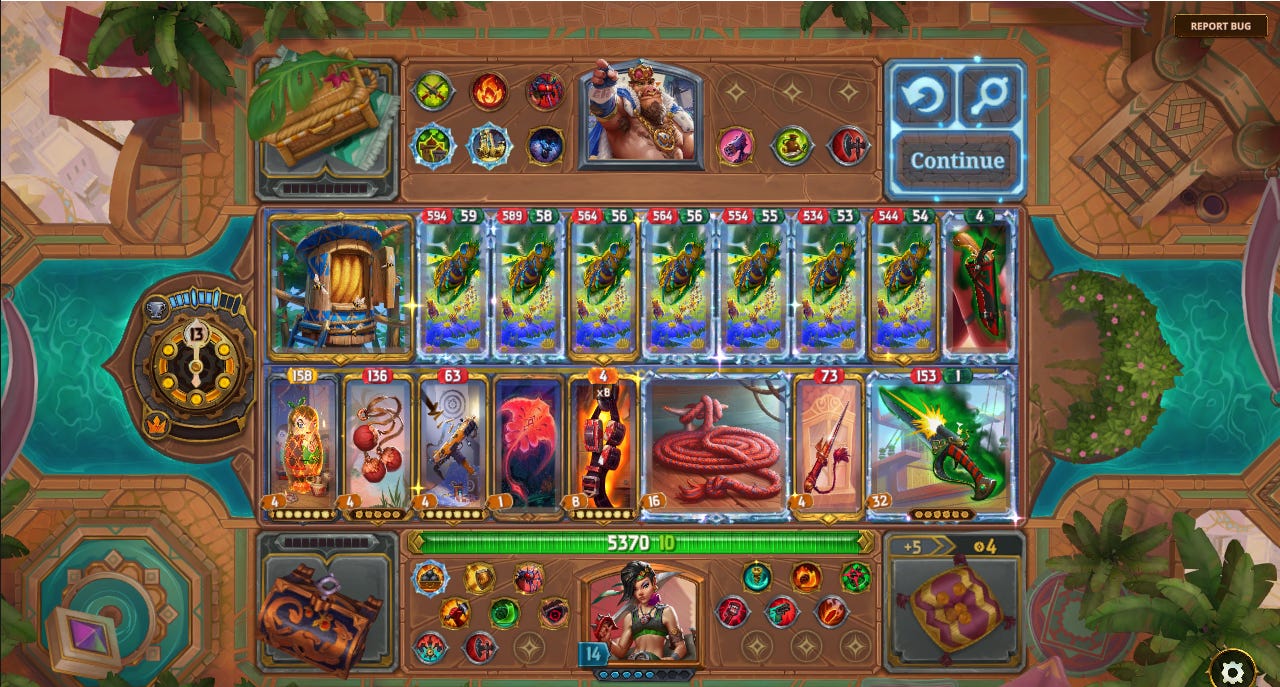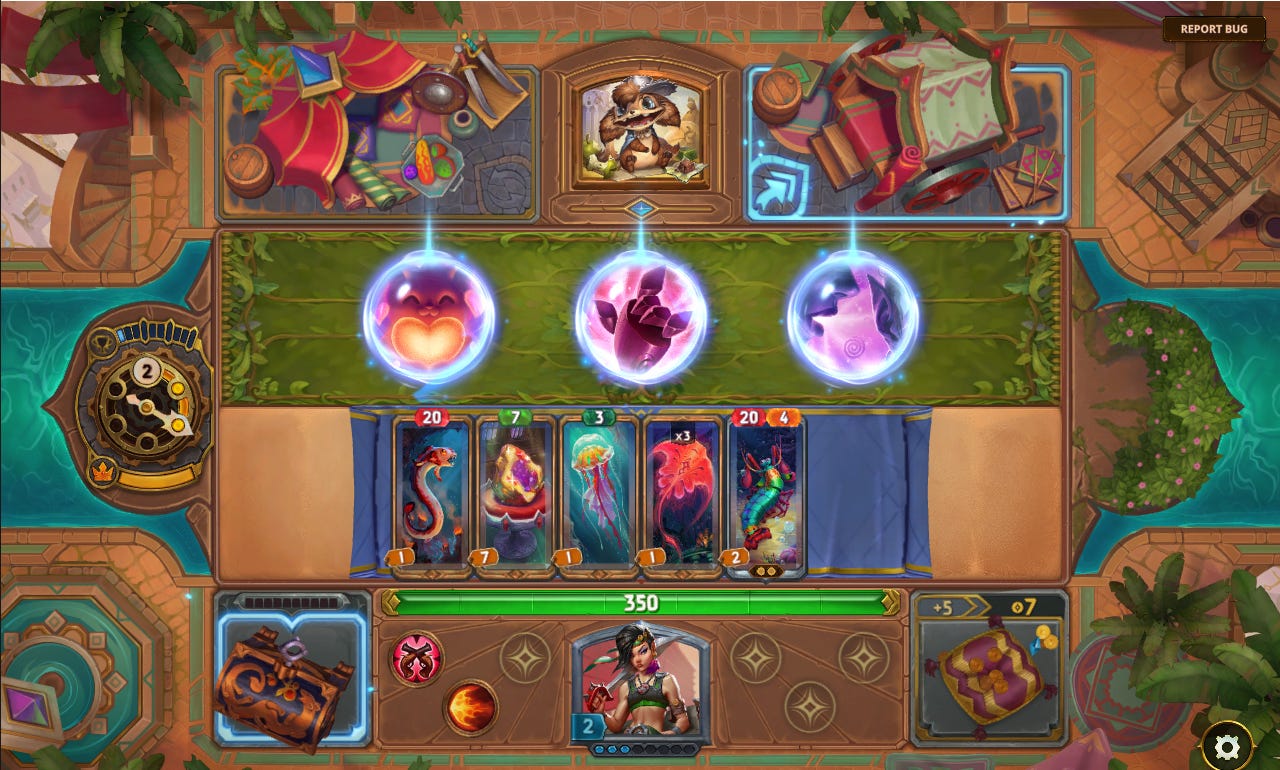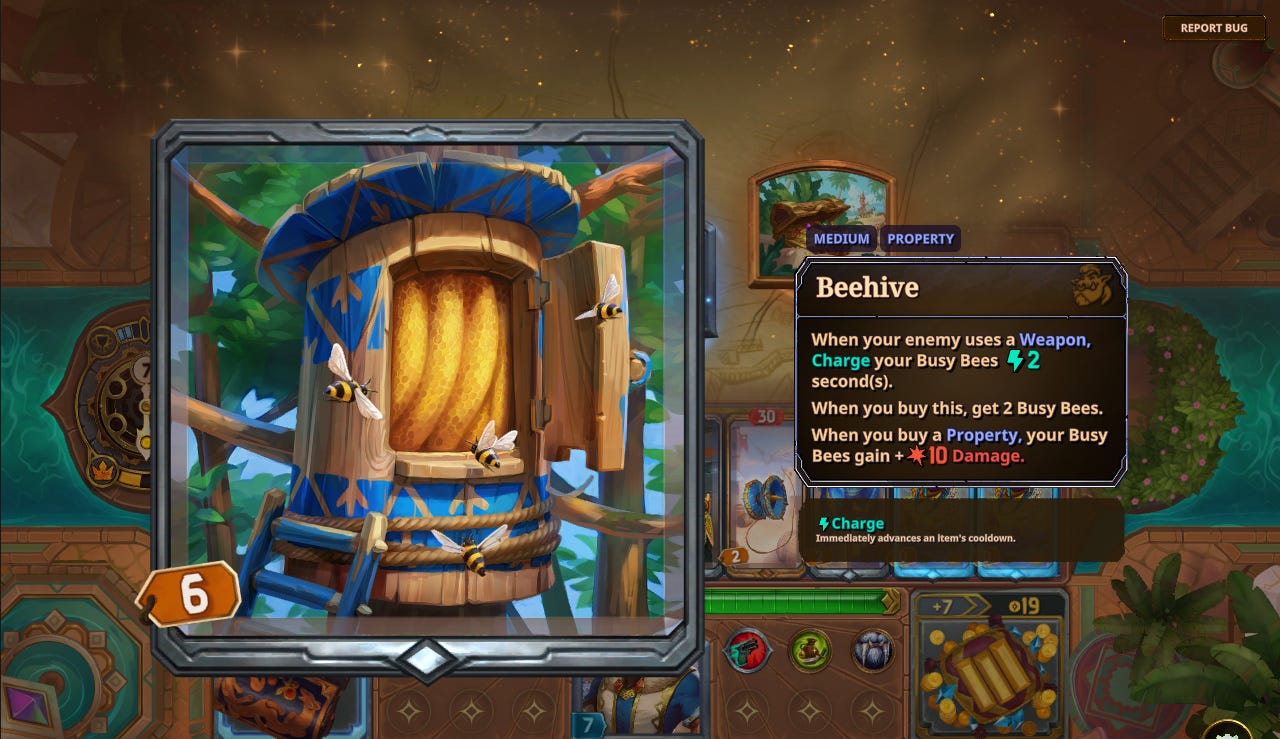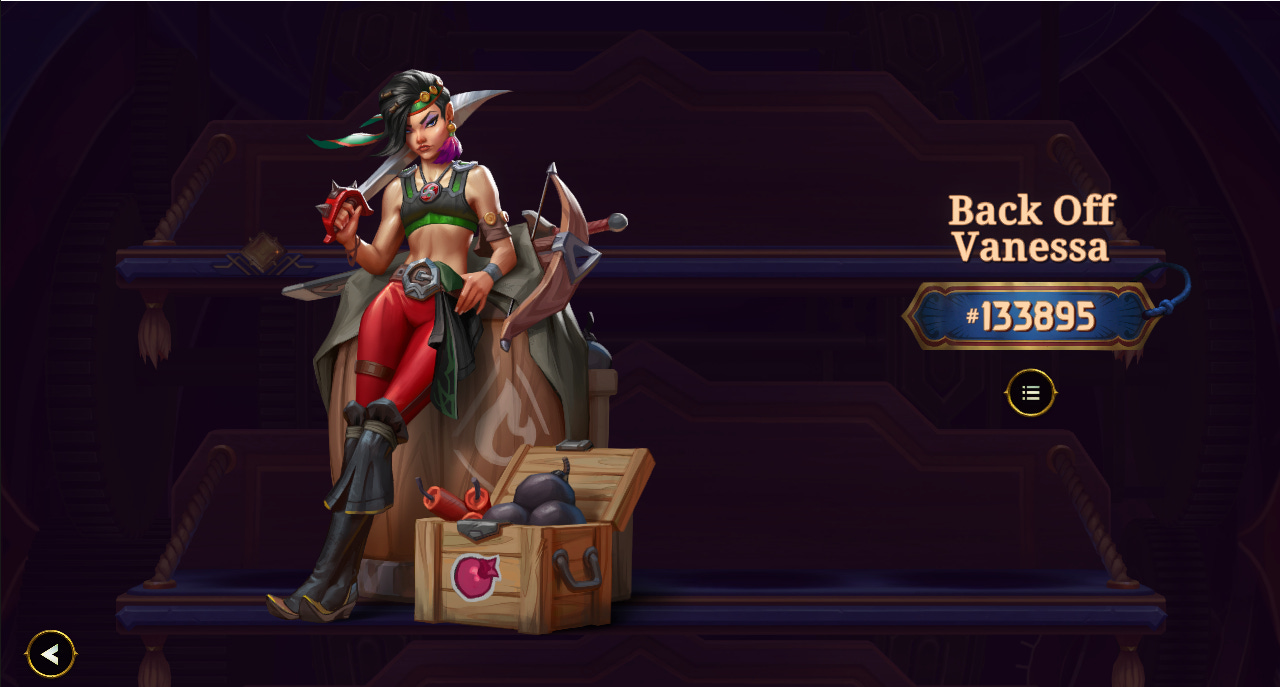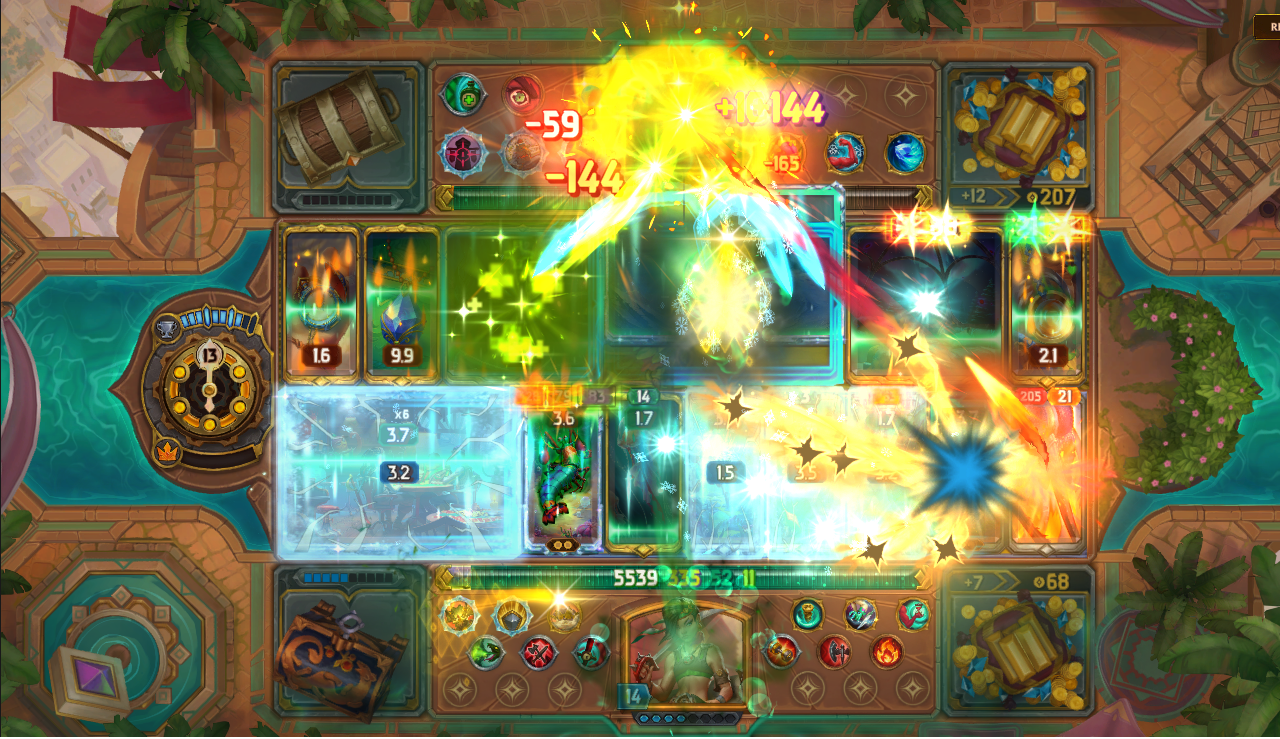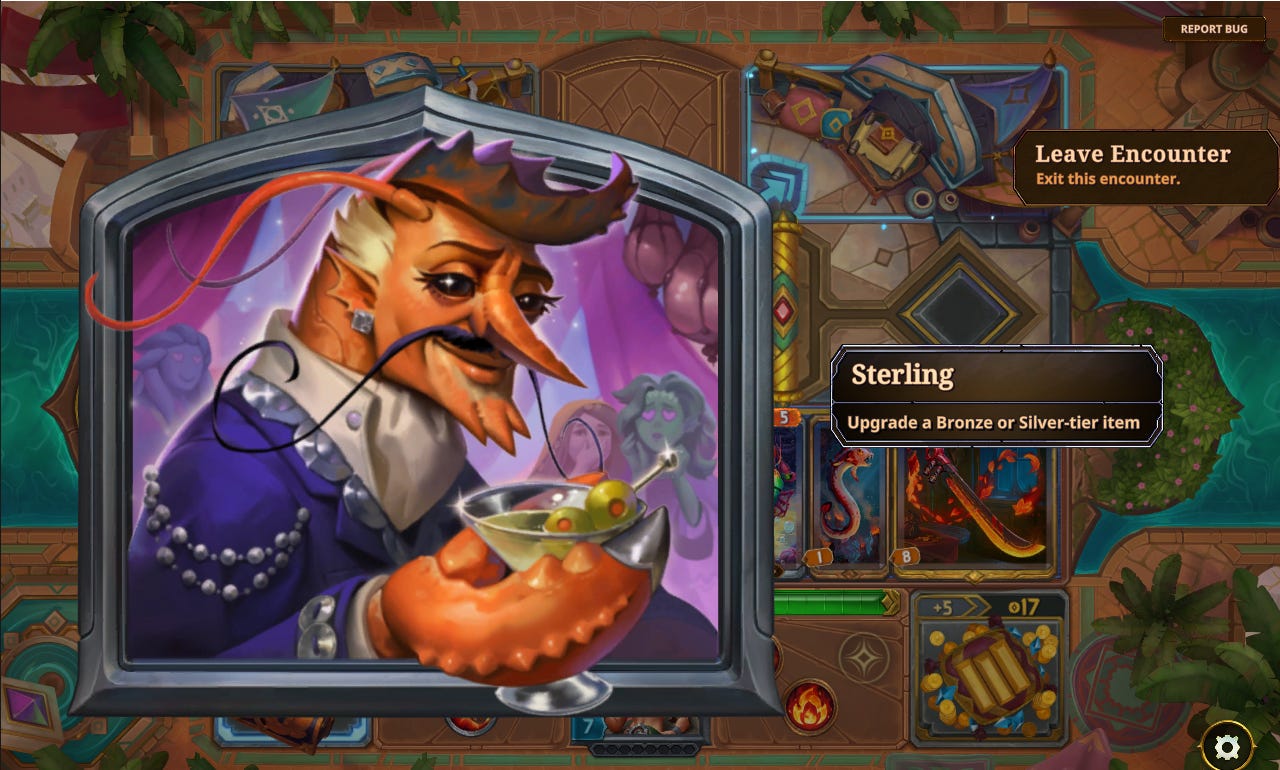What’re Ya Buyin?
Gambling has changed. It left the hallowed halls of casinos and gas stations, where it belongs, and spilled out into the real world. Now everyone has access to potentially life-ruining risk on their phones. While you’re scrolling on Instragram, you’re a few taps away from putting down your life savings on tonight’s Packers game. You could lose it all, but if that parlay hits, you’re looking at a new Ferrari Spider. Just don’t think about the downsides.
Even finances have turned into advanced gambling. You don’t buy stocks for safe, long-term investments. You go all-in on risky calls or other options for companies. Putting down hundreds on stocks that are as volatile and unpredictable as a meth head with a grenade launcher.
Videogames aren’t too far behind. Counter Strike: Global Offensive has been in hot water multiple times with scandals related to betting on matches and thousand dollar lootboxes. Lootboxes in general are now classed as a kind of gambling and are regulated in Europe.
What if you wanted all the fun of gambling, without the financial destruction? Well, the risk of financial obliteration is most of the thrill of gambling. It’s like asking if you want to swim with sharks, but the sharks are actually puppies with plastic fins. Wait, that sounds adorable.
If you want to risk it all on probabilities within probabilities, and dice rolls that lead to more dice rolls, then The Bazaar is the game for you. It’s more random than Teh Penguin of Doom while also being an incredibly complex deckbuilder that offers an overwhelming amount of possibilities, builds and strategies. Most of them are complete nonsense, but that’s what makes it so much fun.
Gameplay
The Bazaar is a roguelite deckbuilding auto-battler. You assemble a board using random, seemingly disparate items. This board you make is then pitted against boards created by other players and you battle it out. The ultimate goal is to make it to 10 total wins, which is a lot harder than it sounds. Along the way you’ll battle hostile NPCs, participate in events and do lots and lots of shopping.
The roguelite elements come from the game’s one-run structure. The game is divided into rounds called days. These rounds are further sub-divided into hours. Each day has six hours, and at the end of each day you fight a human opponent. During the other hours you get to pick from random events, such as shops where you can buy items, or other events where you get gold, bonuses or even free items. At the third hour, you fight a hostile NPC, which rewards you with gold, experience and a random item drop if you manage to defeat it.
The other half of the roguelite formula is the randomness. Like any good roguelite, there are dozens upon dozens of variables that can impact your run. Your items are random, the events you get are random, skills are random, your opponents are random. You roll a dice for a chance at rolling another dice that has a probability of flipping a coin for another dice roll.
Your job is to find order in the chaos of endless randomness and build a deck from the mess of items offered. Each item is like a card; it has its effects, such as damage, healing or poison, and a cooldown. You then place these items on a board, which is your deck. While on the board, your items interact with each other according to their keywords and deal damage to the enemy. All damage is dealt directly to the player, and there are no creatures to clear from the board before doing so like in Hearthstone or Magic: The Gathering.
There aren’t any turns, either, unlike in traditional card games. This is an auto-battler, once you build your deck, you set it lose against an opponent. Everything activates when it activates, you can’t counter any of your opponent’s moves nor can you really make any moves at all. Your board is essentially a hand in a card game, and you’re trying to build the strongest hand for a possible one turn kill. It’s like extreme rock paper scissors. You try to make a rock that’s so strong it can beat paper.
The PVP aspect is an interesting one. It’s asynchronous, which means you don’t fight people in real time. When you fight a player, you’re fighting their ghost. Their build is stored in the server and you fight it. If you defeat the ghost, your build takes its place. Now your genius board is out there terrorizing people while you keep playing the game.
Items come in three sizes, small medium and large. Small items take up one slot, medium two and large items take up three. Your board has a total of ten slots to fit items in any configuration. Unlike in other card games, you’re not limited by a card’s cost or situational use, but by how many you can fit on the board.
The basic game systems are easy to understand at first, but they hold a lot of complexity. There’s a lot of clever simplicity at play here. The board mechanic alone offers a heap of choices to make; how you use the space, how you arrange things on it to get the most out of adjacency bonuses, how you balance that out with positional skills. It’s a lot to think about with just ten slots.
To better explain all these elements, it’s best to look at them one by one, starting with the characters.
Characters
Each character in The Bazaar represents an archetype. There are aggro builds, which go for quick damage, passive builds and scaling/damage over time skills that chip away at your opponent. While they prefer one play style, they’re not locked into just one. There are different ways to play each of them, and they can use most items effectively, if every probability aligns right.
Vanessa- Vanessa is a pirate. Her builds are usually very quick and aggressive, looking to overwhelm the opponent with firepower. She’s great at manipulating item timings, with her arsenal of hastes, which speed up her items, and slows, which, as the name suggests, slow down enemy items. She’s the master of stacking a bunch of small knick-knacks and killing her opponent in a thousand quick cuts, or a single crushing blow with the boulder, which is an item that, once it activates, deals 100% of your opponent’s health in damage.
To complement her aggressive pirate nature, she has a lot of weapons at her disposal. Things like a cutlass, cannons and the every trusty trebuchet. Since she spends most of her time out at sea, she has a lot of seafaring and aquatic items, deep sea creatures and poisonous fish to take down her opponents little by little. She’s also a ninja, apparently, with katanas, shuriken and stealthy high-tech equipment that synergize together for quick kills. Having to pick between pirates or ninjas is a choice no one should be forced to make. Why not both?
She’s the one you start the game with and the one considered to be simple to play, which is a bit of a miscast. She’s easy to play at first. She has a lot of obvious synergies and strong items. You can easily get three wins per run, or even seven, by stacking weapons or hasting aquatics, but getting to ten wins with her is a nightmare. She falls off incredibly hard, and most of the time you’ll have to completely re-do your entire build for the last few fights. Unless you get lucky with enchants or get some ridiculous synergies going, she can’t really compete with the kinds of builds you find in the lategame, where your entire board is frozen for ten seconds, or characters with impenetrable shields.
Vanessa is easily my favorite character. Her builds are straightforward most of the time, but they’re a lot of fun to put together. There are good synergies to find, and a lot of small details that are easily overlooked. It’s hard to get ten wins with her, since she’s the queen of the early game, but it makes getting far into the game with her that much more rewarding. I’m also a fan of just stacking a lot of weapons and smacking the enemy to death with them.
Pygmalien- Pyg is a giant pig who loves long-term investments. He’s supposed to be the unstoppable late-game juggernaut. He starts out weak, but then scales into a ridiculous degree once he gets going. The problem is getting there in the first place.
Since he’s a big money investor, his builds are themed around that in a clever way. He has a lot of real estate items that gain value over time. The more they’re worth, the stronger they are, but they need time to grow. They’re also very expensive. This leads to him being weak at first while he’s still getting his businesses off the ground, but once he hits his stride, he can’t be stopped.
His diverse portfolio includes toys and gaming. He’s the owner of Piggles, a kind of in-universe dice game played with little pig toys, because Pyg is also a raging narcissist, too. These little pig things buff other items and scale very well.
These items are interesting, and fun to play with, but they mess a little with his slow, unstoppable giant archetype. His whole thing was about starting off small then ending the game with huge rewards, but these piggle/toy builds make him a menace in the early and mid game, too.
To show how much of a ruthless capitalist he is, Pyg has managed to undercut Vanessa in the weapons business. As of the latest patches, he can build some of the most aggressive weapon builds in the game that can kill anyone in a few seconds. He has the Jabalian Drum, an item that not only speeds up weapons, but gives them bonus damage, which can lead to massive damage in a very short period of time. Unlike Vanessa’s weapons build, Pyg’s weapons can and often do dominate late game.
Pyg is consistently strong. His items have good synergies, and he’s fun to play since he has a lot of scaling items, and I like it when number go up. Going up against him is a bit of a nightmare, since you know he’s going to have some degenerate nonsense ready, and there’s very little you can do about it. He’s the Wal-Mart to your mom and pop shop.
Mak- Mak is an ancient alchemist who uses poison to whittle away at his opponents. In theory. In practice, he slams 500 points of poison on you in one turn and kills you in a few seconds.
Mak is a huge jerk. His gimmick revolves around transforming reagents and base elements into items with enchantments. It’s all very random, like everything else in the game, but it should lead to some interesting combinations. You’re supposed to think on the fly with him, and weigh the risks and rewards of transforming items over keeping a more steady build. It’s supposed to be like alchemy: messy, volatile and unpredictable.
In reality, he has some of the safest, most stable and consistent builds. All his gimmicks boil down to poisoning his opponent and out-lasting them with regeneration. There’s not much you can do other than kill him in one shot. If you don’t, he’ll heal himself for half his health every second while stacking inordinate amounts of poison on you. He’s like an endlessly regenerating rattlesnake with a gun.
A new sub-archetype he has developed is the self-poisoning build. With this, gains regen as he poisons himself. Counter intuitive, isn’t it? You want to kill the other guy, not yourself. The thing is, the regen outpaces the self-inflicted poison by three or four times very quickly, meaning that you are healing yourself for 600 damage while taking only 100 points of damage, and sending some of that to your unlucky opponent. This is supposed to be a very risky play style where you walk the knife’s edge between life and death in a careful balance, but in reality you’re safe and in no danger of dying. It’s like a roach dropping nuclear bombs to kill his opponents.
I don’t like this guy. Whenever I see he’s my next opponent, I mentally prepare myself for a loss. He’s going to do some voodoo nonsense, turn my health green and kill me, isn’t he? I hit him for 1,500 damage, but he had 1,501 health, so he survived and healed himself. He also has freeze builds, which freeze his opponent’s board. No better way to beat someone than by not letting them play.
Dooley- Dooley is a tiny little robot whose whole thing is meticulous board planning. His items have a lot of conditional adjacency bonuses, so where you place your items matters as much as which items you pick. This fastidious, conditional-heavy style of play fits into his robotic theme because it feels a lot like programming. When this item does this, this happens, so you have to optimize each activation.
His builds are very varied. He can do weapon builds, burn builds, freeze builds and even passive shield builds. He can do anything as long as you know how to place things. His boards require a lot of planning and careful optimization. One item out of place can lead to it being slower by a few seconds, which could cost you a win.
He also has dinosaur builds for some reason. There must be some in-game explanation for it, but I haven’t bothered to read up on it, but he has T. Rexes and such as items and a whole caveman sub-archetype. These guys are all about destroying your opponent’s items. The best way to win is to make sure your opponent can’t even play. Wait, haven’t I said that already?
Dooley’s defining feature is his Core system. The core is a special item that only Dooley has access to. This is a medium item that buffs other items depending on its type. There’s a weapon core, which gives his weapons more damage, a burn core which gives his burn items more power, a friend core which speeds up his friends and many more. These cores usually buff items on their right and are sped up by items to their left, so knowing what you want to buff and how to do it efficiently is key to playing Dooley.
In terms of strength, Dooley is on the weaker side, but he is consistently busted when a new patch comes out. They usually give him some dumb build that takes over the meta, then he gets nerfed to the ground. First there were his bugs. Actual insects, not glitches, that would synergize and wreak havoc. You’d line them up one next to the other, and they’d freeze, poison, slow and burn, all while charging each other, leading to a loop of pain for the opponent. The devs squashed the bugs, then they gave him the railgun, which did a ton of damage in no time. They got rid of that, and gave him dinosaurs, which dealt a ridiculous amount of damage and could destroy an opponent’s board in seconds, leaving no counterplay. Then they nerfed that, and gave him a freeze build. Rinse and repeat.
Dooley is a fun little guy to play. His conditional items make every placement an active decision, and there are a lot of cool synergies to discover. He also has mecha themed items like the Z-sword and the Z-shield, and those are always fun.
The characters in the game are pretty cool, overall. Sure, there are some that have some infuriating nonsense, but that’s the nature of this game. You’re supposed to come up with a stupid, unbeatable build. Their playstyles are varied, and even when there’s some overlap such as with Pyg and Vanessa both sharing strong weapon builds, they manage to feel unique and distinct. Their themeing is nice, too. Each of their item pools gives them all a strong sense of identity, with which items they have and how they work, like with Pyg and his investment-heavy properties or Mak and his alchemical nonsense and potions.
Their balance is murky, at best. With this being a live service game, there are patches happening every now and then that buff and nerf things. Some characters win in some patches, as it happens with these kinds of games. What keeps them relatively balanced is the number of choices available for each of character. Some might have more consistent, easy to find synergies, while others have a one in ten chance to get a build that’s literally unbeatable and breaks the game. Like in every other aspect in this game, a thick layer of randomness smooths out any peaks and valleys, leaving a flat statistical surface.
The rest of the game
This game has a lot going on, and going over each aspect of it like I normally do would be a 10,000 word essay, and it would result in an article that’s somehow more boring than this one, so I’ll explain a few things quickly in a more free-form manner.
You start each run at your character’s base. Vanessa starts at her quarters, Mak in his lab, etc. It gives the characters a nice sense of identity, even if it’s just a small bit of text.
After this you get your first of many choices: your starting bonus. You get to pick from three options: bonus gold and income, an enchanted item or a gold-tier skill. Since this game is about being a merchant (hence the name The Bazaar), everything revolves around gold. The first option gives you more freedom to buy the items you want. The second option gives you an item with a special buff. These can be anything from causing fire damage when used to having multicast and activating itself twice. These enchantments have different rarities, with freeze being the rarest. This starting option is a gamble, since you can get something incredible that will guarantee you at least 3 wins, or you get three enchanted items that aren’t worth anything even if you combined them into one.
The last option, start with a gold skill, is the biggest gamble of them all. Skills are passive buffs that affect your items in hundreds of different ways. There are skills that increase your weapon’s damage by a flat number, skills that haste your items and some that are conditional, such as ones that haste specifically aquatic items or others that affect properties. These are all types of items, I’ll get to that in a second. Skills have rarities; bronze, silver, gold and diamond, with diamond being the most valuable. A gold skill has the possibility of giving you an insane bonus, but it dictates what you will build around. This might give your build some structure, but it can feel restrictive. If you end up with three bad skills to choose from, you might as well restart.
The next step is to go shopping. Every non-combat hour of the day you get a choice of three events and merchants. They’re randomly chosen, but they have some internal consistency, such as some vendors appearing later. These sell different kinds of items, such as one that specializes in medium sized items.
These specific merchants help narrow down what kind of item you might get. If you know the item you want is medium, you go for the medium vendor and avoid the others. Keep in mind that the shop’s inventory is random. You can re-roll each shop once at a fee to see what else you can get.
These items you can buy act as the cards in a regular card game. They each have their own little uses and keywords. Keywords are descriptors of each item. A flagship, for example, is a boat with cannons. It’s classified as a weapon, a vehicle and aquatic. These keywords determine the interactions each item has with the others, with some buffing specific things like vehicles, or properties.
This is where the depth, complexity and intrigue comes in. Like in card games, each item represents rules, and they interact with other items’ rules. You might get a weapon that attacks quickly, but doesn’t do much damage. It doesn’t seem useful at first, but then you realize you can combine it with another item that buffs damage and it starts scaling. Interesting. This is a very simple example, but there are hundreds of these.
The staggering number of items and interactions, combined with the skills and enchantments, means every run is different. Items that seem useless at first get new uses when paired with a rare item or an enchant. I’ve had more eureka moments playing this game than any other deckbuilder. Almost every run I find some crazy new combo or a neat optimization, and some of them are the kind of thing you only see once every few runs.
Randomness
The Bazaar features a heavy amount of randomness. Every in-game hour is randomized, when you go into a shop it’s randomized, when you participate in an event, the rewards are random. There’s random crit chance, items that slow or freeze pick their targets at random. When you win a fight against an NPC, you get a random drop from their board. Enchantments show up at random. It goes from roguelite levels of chance and crosses into gambling territory.
This chaos of probabilities and combinations makes the game overwhelming at first. You’re trying to make a harmonious deck out of a mess of unpredictability. It’s like trying to cook a meal using items from random asiles in the supermarket. You get a pound of ground beef, some pop tarts, glass cleaner and frozen burritos, and you have to scramble to make something edible with it.
There is some method to the madness. The shops, for example, are divided into broad categories that can help you hone in on a specific item. Some shops specialize in aquatic items, so you know to go there if you’re looking for an aquatic item. There’s no guarantee that the one you want will show up, since there are six items, but there’s a higher chance of it appearing there. There are specific events that show up after a certain day, and predictable level up rewards. These minor bits of order in what is essentially a tangled headphone wire of a game make the chance-based nonsense a lot more manageable.
With so many choices at every turn, statistically speaking, you should be able to form a decent deck most of the time. The thing the game tests is your risk management and planning, which sound like investment terms. You’re always revising your build and questioning if an item should be there or not. You get a useful item, do you base your build around it or do you keep it in your back pocket in case you see something better? You get an item that isn’t powerful now, but could be a menace if paired with another item. Do you keep it and wait for that other item, or do you go for the things that give you an immediate return, even if it is significantly smaller?
This constant decision making is what makes the game engaging. You’re constantly juggling dozens of possibilities and ideas. Every time you enter a shop or open an even, you can see five more builds you could make. It’s like looking at all the infinite repercussions an action could have on the future. Buying a specific item at one point could be the event that causes a butterfly effect and lets you win. You could also buy something that looks like a good investment only to get completely screwed over, like buying some crypto shitcoin.
That’s because with randomness comes frustration. Humans are notoriously bad with probabilities, myself included, and when faced with abstract dice rolls, things get messy. I’ve have runs where I lose because I keep hoping for one specific item to come up, and it never does. There were others where I had a build going, but just needed one piece to finish it, and it never came up, so I sold my build, only to find the missing piece in the next shop. When you play games of chance, you can either win or lose. It’s out of your hands in both instances, but when you lose, it stings a lot more. Just like gambling.
Then there’s also the randomness involved in the in-game mechanics. You can give items crit chance, which lets them double their effect. If a weapon crits, it does double damage. If a poison item crits, it deals double its poison. Same with heal and shield items. There will be times where your item with 56% crit will not crit once. There will be times where you’ll crit with a 10% chance and win. The same thing can happen and you will lose. Your most important item could get frozen and not even activate once, that sort of thing. It’s all up to the dice, and your job is to minimize risk as much as possible, but it’s never zero.
Presentation
For a game about static PNGs shooting at each other to represent commerce, The Bazaar looks and sounds great. There’s evidently a lot of care put into the audiovisual aspect of the game. Every little effect and sound makes the combat encounters feel alive, and exciting.
The art is a definite strong point. Every card is rendered in colorful detail with a nice digital paint look. Each item is represented by an illustration, and they’re all fantastic. They’re also very readable, even when presented in the tiny items, you can know what the item is at a glance. Each illustration is framed perfectly in its little container, making everything look like a little painting.
There’s a strong sense of themeing with the color palettes used. Vanessa, for example, is an aggressive, pirate rogue. Her items are usually red, black and green. The color palette stays consistent, even for things like gray guns. Her revolver, for example, is silver with red accents, but if you look closely, the gray has a very slight reddish tint to it. Pygmalien’s items are all blue, green and gold. They’re very relaxed colors, to give an air of stability to reflect his more pacifist, defensive play style. The gold accents represent, well, gold, since he’s all about stacking value and investing. Mak’s are all green and brown, and Dooley’s are metallic grey and safety orange.
These seemingly limited palettes are arranged in incredibly smart ways to make varied illustrations that still feel like part of a cohesive whole. Vanessa’s items are mostly red, but she also has a lot of aquatics. With these, the artists put in some very subtle touches of red where you wouldn’t expect them. There’s one item, the Turtle Shell, which is just a green turtle shell. How do you make that fit into Vanessa’s color palette? You put in some red fish to frame the shell, and put a hidden scroll inside the shell with a red ribbon. It looks nautical and it feels like it’s part of Vanessa’s armory, not just because it has to do with the sea, but because the colors fit. Another one I like is the Sniper Rifle. The image is mostly grey, black and some blue to indicate that it’s night time, but the rifle has some reddish accents. Behind it, there’s a red cloth that frames the score nicely, and near the barrel, there’s a subtle orange glow on the wall. It makes the item look sneaky, perched on a rooftop at night looking for its target. The reddish glow near the gun’s barrel gives it a dangerous edge, there’s something smoldering just off-screen, invoking the image of the gun about to go off. You could pick any item out a pile and you’re guaranteed to see an expertly crafted illustration.
Sure, that sniper rifle looks great, but if it just sits on your board doing nothing, you’re not going to get too excited about it, and that’s where the special effects come in. Whenever a card activates, it dips a little and jolts back up to show it activated. There’s a crawling scanline over each card to show how long until their next activation. Shield effects cover your lifebar with a hard, metallic looking yellow shell. Whenever an item slows or hastes, they shoot a little glowing light at their target. Some items have special attack animations, like the crusher claw which attacks with a ghostly, orange crab claw. These effects do a good job of giving each item a lot of personality while also showing you what’s happening in combat.
The sound effects are there working in tandem with the visuals to make everything come together. Every little thing in the game has an accompanying sound effect. Whenever an hour goes by, the clock ticks and click as the hour hand gets into place. Whenever you hover over something, it moves a little and gives off a small click sound. Even the click sounds are randomized, varying in pitch slightly so they don’t get monotonous. This all works to give the game a very clicky, tactile feel, like you’re handling real game pieces and not just pictures on a screen. It’s a lot like Balatro in that sense, where there are a lot of little tricks to spice up the user experience.
Each effect gets its own sound during battle. Heals have a rising, ethereal sound, shields have a hard, clinky sound and crits have a bassy, booming sound to them. It does a good job of grounding the abstract gameplay a little, and it makes things a bit easier to follow. Not to mention that hearing all those things go off is just satisfying on a primal level. Every sound in this game is casino-like, jingly and meant to fire off your brain’s reward center.
The presentation is incredibly solid. It’s the kind of thing I’d expect to see in a triple-a game. Sure, it’s not ultra-realistic 3D, but I’m a sucker for card art, and the one on display here is on par with Blizzard’s stuff. I am not a fan of how a lot of Blizzard games play, but their artists are incredible at their craft, and they put out consistently good stuff. Apparently the game’s developer, Tempo, has some money, they’re not exactly a small indie company, but they’re putting their money to good use hiring some excellent artists
Monetization (outdated)
Read the post-monetization change review here.
This (was) a free to play game so you know there’s a catch. You can play the game for free with Vanessa. You’ll get access to all the content that’s available up to now, and if there’s a new expansion out, you can get it by playing the game. You can also unlock the other characters by playing the game. You can also purchase them, if you’d like.
There is a battlepass because of course there is. It’s a game released after 2018 so of course it has a battlepass. To this game’s credit, there’s no difference between the paid and free rewards. Every reward is available for free. Paying for the pass only speeds up your progress by fifteen levels, meaning you get your things faster. You can still make good progress in the pass just by playing like you would normally.
There are also a lot of cosmetics. There are skins for each character, which change their outfit. They don’t offer much, you just make your little dude look a bit different. There are different boards you can use, card backs and even alternate music packs.
The prices for these cosmetics is insulting. A character skin, which is just an animated PNG, will set you back $20.00. TWENTY WHOLE DOLLARS ON ONE PNG. You can get these skins by playing the game. They’re a rare reward from the lootboxes because of course this game has lootboxes. You earn lootboxes by winning in ranked mode.
To play ranked, you need ranked tickets. You get a free ticket a day, and you can get more in every battlepass. This limits how often you can play ranked. If you go for a match and you lose, getting zero wins, you use the ticket and that’s it. If you concede halfway through, you lose the ticket as well.
This system is in place to limit how many times you can play ranked in a given period, since that’s how you get the rewards you normally have to pay for, but I don’t like this system. I hate being restricted. You can still play regular, unranked mode, but it’s not the same. I’m sure, as of the July 2025 patch, that the opponents in unranked aren’t other humans, they’re fakes. I’ve gone up against the exact same player with the same build multiple times. Something’s fishy.
If you want more rewards you can subscribe to the game. For $10 a month, you double your ranked chests with every win! Wow! Amazing! You still have to play and win, and you still have to pay for everything else.
This game’s monetization is the worst part about it. Sure, you can play for free and slowly get everything, but it takes a while. The limited rank tickets are terrible and the fact that the price for everything in the shop is so high combined with a subscription fee is a two-handed slap to the face. No wonder these people are so good at making a game about being a ruthless capitalist, that’s their daily life. Write what you know.
I absolutely do NOT recommend you spend a single cent in this game. None of the monetized options are worth looking at.
Nitpicks
There are a few things I have a problem with in The Bazaar. The UI is one of them. This is 100% a menu game, meaning your means of interacting with the game is through menus. There isn’t any real-time gameplay. With this in mind, you’d think the user interface would be the most polished aspect, but there are enough small snags with it to become noticeable.
The great effects work I praised earlier is part of the problem. The game insists on having little animations for everything, and they look fine the first few times, but in a game where you’ll be seeing around fifty of these little animations per game, they start to pile up. A lot of them take a long time to resolve, like entering stores or collecting loot, which is a real problem I’ll get to later. In between days you get an animation for the day cycle and before each match there’s an unskippable versus screen that isn’t very interesting, doesn’t give you any real info and takes up more time than it should.
There are more issues that have to do with the game’s format. A key mechanic of this game is the board. Where you place your items is incredibly important. You’d think that moving them around would be simple, if it’s such an integral part of the experience, but it can get to be a pain in the neck. You have a stash to keep spare items in, and managing that and your board gets annoying. To swap items in and out, you just drag them from one place to the other, which is fine, but when they’re both full, you have to start juggling things and jostling them around. Maybe your large, 3-slot Crow’s nest is ready to be put into storage for now, so you stash it, but the wrong items come out of the stash to replace it, so you have to tinker with that for a bit. Sometimes if you want to put a large item in the stash, you first have to rearrange it so that another large item or three small items take its place on the board, since you can’t swap out two medium items. This leads to moments where you can’t take in more items because you supposedly don’t have space, but you do, it’s just not organized well.
Moving your items around is more trouble than it’s worth. There’s a category of items called loot that serve to give permanent buffs to your other items. You sell the loot, and your leftmost item that fits the criteria gets a bonus. You sell a sharpening stone, your leftmost weapon gains a little damage. That sort of thing. Notice that I said “leftmost”. For some reason, these buffs apply to an item in a specific position, so you have to put the item you want to buff on the left, sell the loot then put the item back into its original place. Why can’t you just sell the loot and pick which item to buff? The whole leftmost thing seems like an unnecessary step. It gets even worse if you have multiple items to buff.
There isn’t a way to move multiple items, either. If you want to put half of your board into the stash, or sell things, you have to drag them one by one. There’s no box select or multi-select, either.
Outside of the game, the UI for the rewards is terrible. The icons are really tiny, and don’t look like buttons. When you’re opening lootboxes, you can’t bulk open them unless you have ten. Anything under ten means you have to open them one by one, suffering through the almost 15 second animations for each. It takes forever.
These might seem like small inconveniences, but when fifty of them happen per run, it starts to add up. With some slight tweaks, it could be made a lot better.
There’s also no infinite mode. You can’t keep going past ten wins against harder CPU opponents to see how far you can take your ridiculous build, which is something 9 Kings does well. There’s no way for you to make and test builds in a training setting, either. Those would be some fun tools to add to the game which would let you play around and explore the interesting mechanics a bit deeper and at your own pace.
Conclusion
Edited on August 20 2025: On August 13, The Bazaar changed from free to play, to pay to play. If you hadn’t made an account before August 8 2025, you need to pay $40 to play. Click here to read an updated conclusion where I don’t recommend the game and tell you why. Everything after this is the review’s original conclusion from before this change.
That’s The Bazaar. A random card game full of potential frustration and big dopamine. It works great as a deckbuilder thanks to the massive number of items on offer and all the weird ways they can interact with each other. The board mechanic adds a layer of depth to the whole thing. With just ten spaces, each slot becomes a valuable commodity, and you’re constantly reconsidering every item on your board for maximum efficiency like a ruthless capitalist.
The constant decision making makes the game a lot of fun, and the randomness keeps things fresh, even if it invites a lot of nonsense. It’s easy to get a string of bad luck and attribute it to fate, but there’s usually something you can do to influence the outcome. There’s enough chaos and chance to keep things interesting, but enough strategy involved. Your choices matter, even if they don’t seem like it.
Coming to grips with the mind-numbing amount of choices is a part of this game’s deceptively steep learning curve. Card games in general require a lot of memorization. You need to know every item, what it does, its keywords, what those keywords mean, and how they interact with the dozen or so other keywords on your board. You need to plan ahead a lot, and if you don’t know what to look for, this game can feel very volatile and out of your control.
This obfuscation of information is terrible for new players. The Bazaar is a wiki game. A wiki game is a game where any info you might need about the game is outside of the game on the wiki. You’ll need to have it open in a separate window to know what the hell is going on a lot of the time. There are dozens of concepts, effects and interactions that are not obvious at all. While that does lead to a lot of interesting emergent gameplay, it also leads to a ton of frustration if you’re not sure what something does. Planning ahead for events and other things is also a core part of the strategy in this game, and there’s no real way of knowing what’s ahead other than by memorizing the wiki.
With all that said, I still recommend The Bazaar. Cautiously. It’s a fun game with a lot to discover, but it’s also an incredibly obtuse and frustrating experience. If you like roguelites, deckbuilders or gambling, give the game a shot. You can dream up hundreds of crazy decks, and you’ll be surprised at the kinds of degenerate nonsense you can come up with. There are a lot of “once in a hundred games” type of things. If you don’t mind the initial burden of knowledge and having to read a ton, then give the game a shot.
This game is also an “enjoy the process” type game. The goal of the game is to get to ten wins, but that’s difficult most of the time. Top players can get to ten wins consistently, around 60% of the time, so you can control for randomness, but you have to be a real card game junkie for that. You need to know every single possibility in the game and account for it. Most of the time, you’ll get three wins, maybe seven for the silver trophy. It’s the kind of game where, if you don’t find fun in just playing the game, then you won’t enjoy it. If you need to win to have fun, this will bring you more frustration than anything else.
I was like that at first. I used to get angry at this game, and hated how random it was, but for some reason I kept coming back to it. There was something there, I could smell it, but it was buried under twenty tons of pure luck. I watched other people play, read guides and did a lot of research and slowly started to understand how the game works, and gained an appreciation for it.
It’s a fun game that anyone can get into, with a little patience. It has all sorts of gambling fun. Every decision asks you if you want to be safe or take a risk for big money. Every time you enter a shop, you see the items on display, and you’re tempted by the reroll button asking you to spend a little gold for new items. That item you want is right there behind the reroll, you can feel it! The tables are hot, baby! Even the battles are gambley. The way you set your cards and just watch them go feels like horse racing, where you’re sitting there cheering it on as if that would do anything, watching something completely out of your hands sprint down the track for a possible payout. Then your most important item gets frozen and you lose. I don’t recall ever seeing a horse get frozen mid-race. Maybe I went to the wrong races.
At least when I lose in The Bazaar all I get is a small sting of frustration, and a big sigh of relief knowing that I can gamble without some Italian stereotype threatening to break my kneecaps like my last trip to Las Vegas.
The bazaar is on Steam for $40.
Disclaimer: This is a live service game. The information in this review covers up to the July 21 2025 patch. This information has an expiration date. There could be a patch in the future that screws with the game or at least makes this review outdated. I tried my best to review the core systems of the game, the stuff I don’t think should change. This game doesn’t have any actual gambling. That’s just me being facetious. This was not sponsored, although I wish it was.



